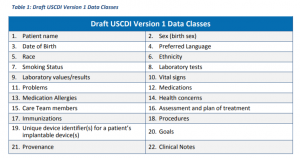As the use of electronic health records (EHR) continues to grow throughout the medical industry, meaningful use plays a crucial role in directing the effectiveness and scope of the technology.
Meaningful use is the employment of EHR to accomplish certain goals. Chief among them:
- To improve quality, safety and efficiency, and reduce health disparities
- To engage patients and family
- To improve care coordination, and population and public health
- To maintain privacy and security of patient health information
Once these improvements are made in organizations across the country, advocates expect pronounced enhancements in healthcare delivery, including better clinical outcomes, improved population health outcomes, increased transparency and efficiency, empowered individuals and more robust research data available on health systems.
Achieving these objectives is of great importance to U.S. leaders, who created a system of reimbursement incentives for organizations that purchase an EHR and then demonstrate meaningful use.
To help guide healthcare workers through the process of establishing an EHR system, government agencies have assembled three particularly useful online resources.
HRSA.gov
The Health Resources and Services Administration has information regarding the ever-expanding field of Health Information Technology (IT). One resource it provides is a toolkit, “9 Steps to Implement EHRs.” Each step features a brief summary followed by a list of links to more in-depth articles. In general, these are the nine steps described:
- Plan the project in advance: Make an overall plan or group of separate mini-plans to get started and then expand as needed to acquire, install and use the new technology.
- Adapt workflow: Determine which current processes are efficient and which need improvement. Design new workflows with an EHR in mind, then test and refine them before launch.
- Plan budgets and secure financing: Costs related not only to purchasing the software but to project planning, vendor selection, installation and staff training all need to be considered.
- Build a workforce: The core EHR team will need the skills of internal staff plus the specific expertise of health IT experts. All must communicate effectively through the various phases of the project.
- Collaborate: Many resources are available to help organizations implement EHR systems and exchange health information electronically.
- Select a certified EHR: Organizations should analyze needs, understand how different EHRs meet them and follow recommended procedures for vendor comparison and contracting.
- Implement system: This involves working with the vendor to install and customize the system, conducting tests to ensure it operates as intended, and having a trained staff ready to use it.
- Ensure privacy and security: Organizations need to prepare policies and procedures to share with staff and implement safeguards to prevent unauthorized disclosure.
- Evaluate and optimize: Organizations should determine whether they are reaching the original goals set for the EHR, uncover and fix problems, and demonstrate value to stakeholders.
CMS.gov
The Centers for Medicare and Medicaid Services’ website for EHR incentive programs details the two types of incentives offered for meaningful use—the Medicare program is run through CMS and Medicaid is handled by state agencies—what organizations are eligible to receive them and how to go about obtaining them. The site also provides a wealth of information regarding EHRs and meaningful use through links to a variety of documentation.
HealthIT.gov
Like the HRSA website, HealthIT outlines steps for implementing an EHR. This site includes the achievement of meaningful use as one of its six steps, however, establishing that as a priority and offering practical information to learn more about it. There is also an index of links provided to brush up on some basic questions and terminology. The six steps include:
- Assess practice readiness: With an accurate view of an organization’s preparedness level, it can design an implementation plan that meets its specific needs.
- Plan an approach: Planning draws on information gathered during the assessment phase to outline the organization’s EHR implementation plan.
- Select or upgrade to a certified EHR: Eligible healthcare professionals and hospitals must use certified EHR technology in order to achieve meaningful use and qualify for incentive payments.
- Conduct training and implement an EHR system: This involves the installation of the EHR system and associated activities, such as training, a mock “go-live,” and pilot testing.
- Achieve meaningful use: The final phase of implementation includes successfully demonstrating meaningful use while reassessing what has been learned from training and usage.
- Continue quality improvement: There should be continuous evaluation of an organization’s goals and needs beyond implementation to continue improving workflows while leveraging the functionality of an EHR.
Establishing or upgrading an EHR is a complex endeavor with many components and phases. These government resources, however, can set any healthcare organization on the right path toward getting the most out of its new investment.



